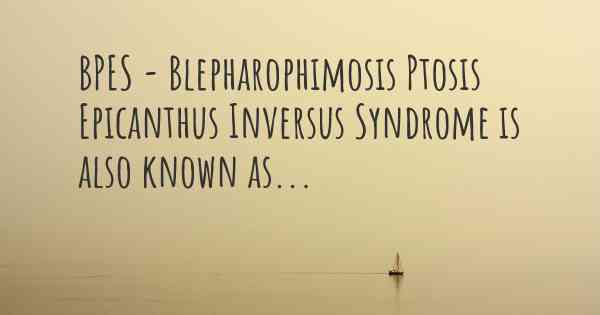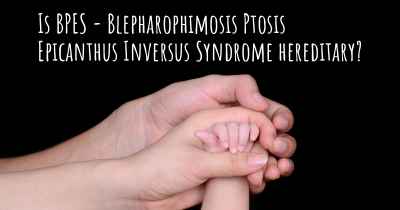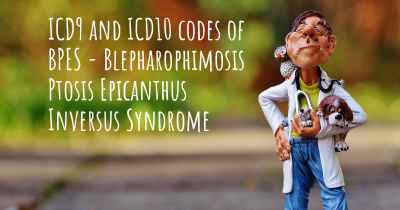BPES - Blepharophimosis Ptosis Epicanthus Inversus Syndrome synonyms
What other names are the BPES - Blepharophimosis Ptosis Epicanthus Inversus Syndrome known by? Synonyms and other terms with which BPES - Blepharophimosis Ptosis Epicanthus Inversus Syndrome is known.

BPES, also known as Blepharophimosis Ptosis Epicanthus Inversus Syndrome, is a rare genetic disorder that affects the development of the eyelids and surrounding structures. This condition is characterized by a combination of specific facial features, including narrow eye openings (blepharophimosis), droopy eyelids (ptosis), and inwardly folded skin near the inner corners of the eyes (epicanthus inversus).
Individuals with BPES typically have a distinctive appearance due to these facial abnormalities. The narrow eye openings can restrict the field of vision and may cause difficulties with eye movements. Ptosis, or drooping eyelids, can vary in severity and may impair vision if it obstructs the line of sight. Epicanthus inversus refers to the inwardly folded skin near the inner corners of the eyes, which can give the appearance of widely spaced eyes.
BPES is a genetic condition that can be inherited in an autosomal dominant or autosomal recessive manner, depending on the specific genetic mutation involved. It is caused by alterations in the FOXL2 gene, which plays a crucial role in the development of the eyelids and other tissues. Genetic testing can be performed to confirm a diagnosis of BPES and identify the specific mutation.
Treatment for BPES is primarily focused on managing the associated symptoms. Surgical interventions, such as eyelid surgery (blepharoplasty) or ptosis repair, may be recommended to improve eyelid function and enhance the aesthetic appearance of the eyes. Regular eye examinations are important to monitor vision and address any potential complications.
In conclusion, BPES, or Blepharophimosis Ptosis Epicanthus Inversus Syndrome, is a rare genetic disorder characterized by narrow eye openings, droopy eyelids, and inwardly folded skin near the inner corners of the eyes. It is caused by genetic mutations in the FOXL2 gene and can be inherited in an autosomal dominant or recessive manner. Treatment options primarily focus on managing the associated symptoms through surgical interventions and regular eye examinations.








